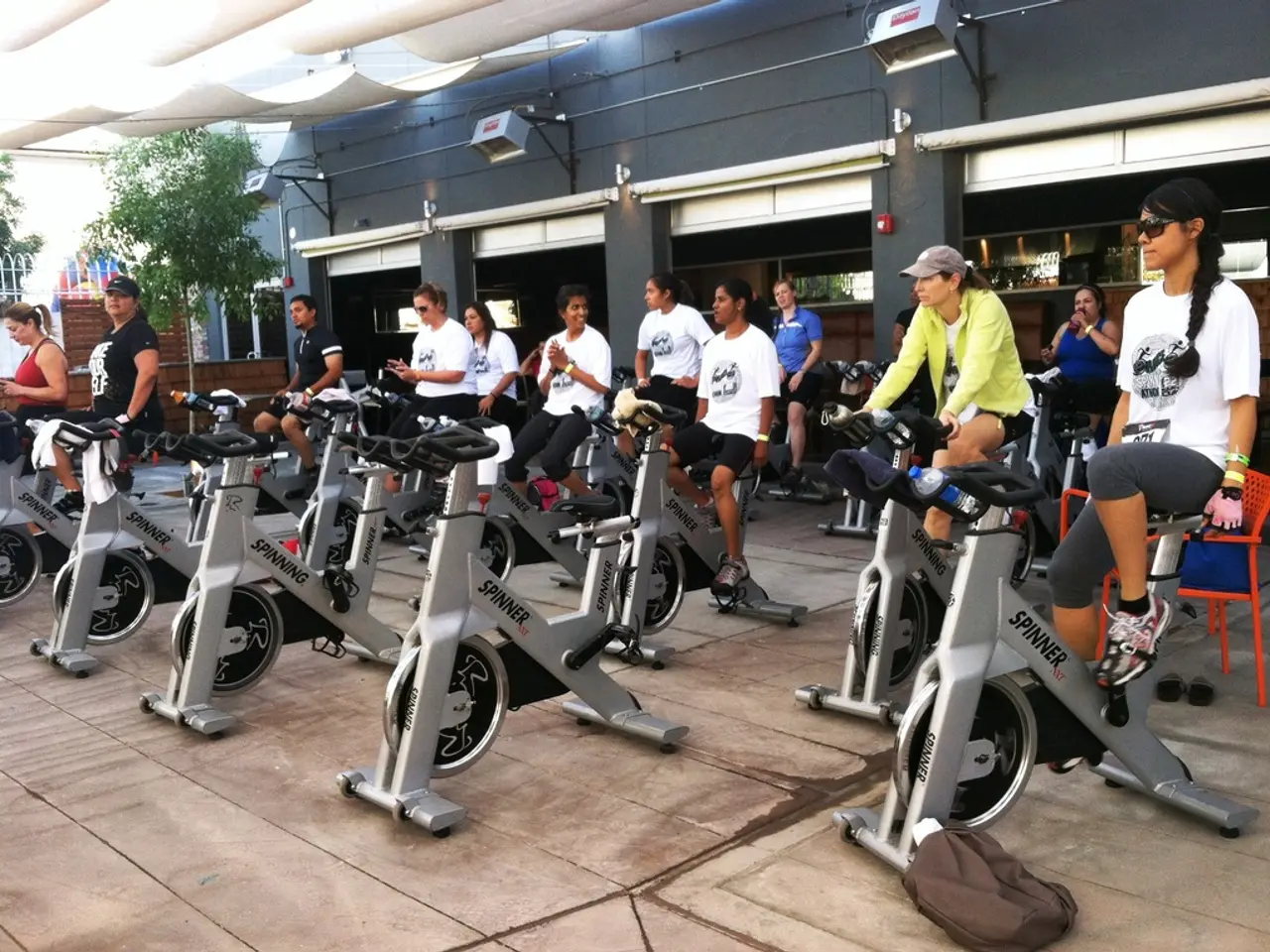Exercise-Induced Chest Discomfort: Root Causes and Appropriate Actions
Chest pain during exercise can be a cause for concern, but understanding its potential causes and taking appropriate action can help alleviate any worries. This article aims to provide a clear and concise guide on the various reasons for chest pain during physical activity, along with preventative measures and treatment options.
Firstly, it's essential to understand that chest pain during exercise can stem from cardiac, musculoskeletal, or respiratory issues. One common cardiac cause is stable angina, a condition linked to coronary artery disease that causes chest pain or discomfort during exertion or stress due to reduced blood flow to the heart.
Muscle strains, often involving the intercostal muscles, can also lead to sharp chest pain. These strains are most commonly caused by overuse, especially during exercise, sports, or high-impact crashes.
Exercise-induced asthma, or bronchoconstriction, is another respiratory cause of chest pain. Intense aerobic activity can trigger airway inflammation and narrowing, resulting in chest tightness or pain along with breathing difficulties.
Other cardiac causes, such as aortic stenosis, can also lead to chest pain during physical activity due to obstruction of blood flow from the heart.
Prevention is key when it comes to chest pain during exercise. For cardiac causes like angina, managing risk factors such as controlling blood pressure, cholesterol, and quitting smoking is crucial. Avoiding excessive exertion without proper conditioning and following medical advice if you have known heart disease are also important precautions.
For muscular causes, proper warm-up before exercise, using correct technique, avoiding sudden or intense heavy lifting, and maintaining good posture can help prevent muscle strains.
For exercise-induced asthma, using prescribed inhalers before exercise, warming up gradually, and avoiding triggers like cold or dry air can help reduce symptoms.
Treatment for chest pain during exercise depends on the cause. Cardiac chest pain (stable angina) may require medications like nitrates, beta-blockers, or procedures to improve coronary blood flow. Muscle strains typically improve with rest, over-the-counter pain relievers, and avoiding aggravating activities. Exercise-induced asthma is managed with inhalers (bronchodilators) and sometimes anti-inflammatory medications, along with lifestyle adjustments.
For any chest pain during exercise, especially if persistent, severe, or accompanied by other symptoms like sweating, nausea, or shortness of breath, urgent medical evaluation is critical to rule out serious conditions like a heart attack. Symptoms of a heart attack can include pressure or pain in the chest, sweating, nausea, dizziness, anxiety, shortness of breath, back pain, jaw pain, and vomiting.
In summary, chest pain during exercise can arise from various causes, and prevention and treatment must be tailored accordingly after accurate diagnosis by a healthcare professional. By understanding the potential causes and taking appropriate precautions, one can enjoy a healthy and active lifestyle without fear of chest pain.
- Cardiac disease, such as stable angina, can cause chest pain during exercise due to reduced blood flow to the heart.
- Muscle diseases, like sprains and strains in the intercostal muscles, can also lead to sharp chest pain during exercise, often due to overuse.
- Respiratory conditions, such as exercise-induced asthma, can trigger chest pain during exercise due to airway inflammation and narrowing.
- Aortic stenosis, another cardiac disease, can lead to chest pain during physical activity due to obstruction of blood flow from the heart.
- Preventing chest pain during exercise includes managing risk factors for heart disease, such as controlling blood pressure, cholesterol, and quitting smoking.
- Avoiding excessive exertion without proper conditioning, and following medical advice if you have known heart disease are important precautions.
- Preventing muscle strains involves proper warm-up before exercise, using correct technique, avoiding sudden or intense heavy lifting, and maintaining good posture.
- For exercise-induced asthma, using prescribed inhalers before exercise, warming up gradually, and avoiding triggers like cold or dry air can help reduce symptoms.
- Treatment for chest pain during exercise depends on the cause, with cardiac chest pain requiring medications like nitrates, beta-blockers, or procedures to improve coronary blood flow.
- Muscle strains typically improve with rest, over-the-counter pain relievers, and avoiding aggravating activities.
- Exercise-induced asthma is managed with inhalers (bronchodilators) and sometimes anti-inflammatory medications, along with lifestyle adjustments.
- Any chest pain during exercise, especially if persistent, severe, or accompanied by other symptoms like sweating, nausea, or shortness of breath, warrants urgent medical evaluation to rule out serious conditions like a heart attack.
- Symptoms of a heart attack can include pressure or pain in the chest, sweating, nausea, dizziness, anxiety, shortness of breath, back pain, jaw pain, and vomiting.
- Multiple medical-conditions, such as macular degeneration, psoriatic arthritis, colitis, HIV, and hepatitis can cause muscle pain, dry eyes, depression, arthritis, and pain, but they are not directly related to chest pain during exercise.
- Science and medical research play a crucial role in understanding, predicting, and treating chest pain during exercise, as well as other health and wellness concerns like obesity, asthma, and cardiovascular health.
- A holistic approach to health includes maintaining cardiovascular health, mental health, fitness and exercise, and a balanced diet, which can help prevent or alleviate various health issues, including chest pain during exercise.




